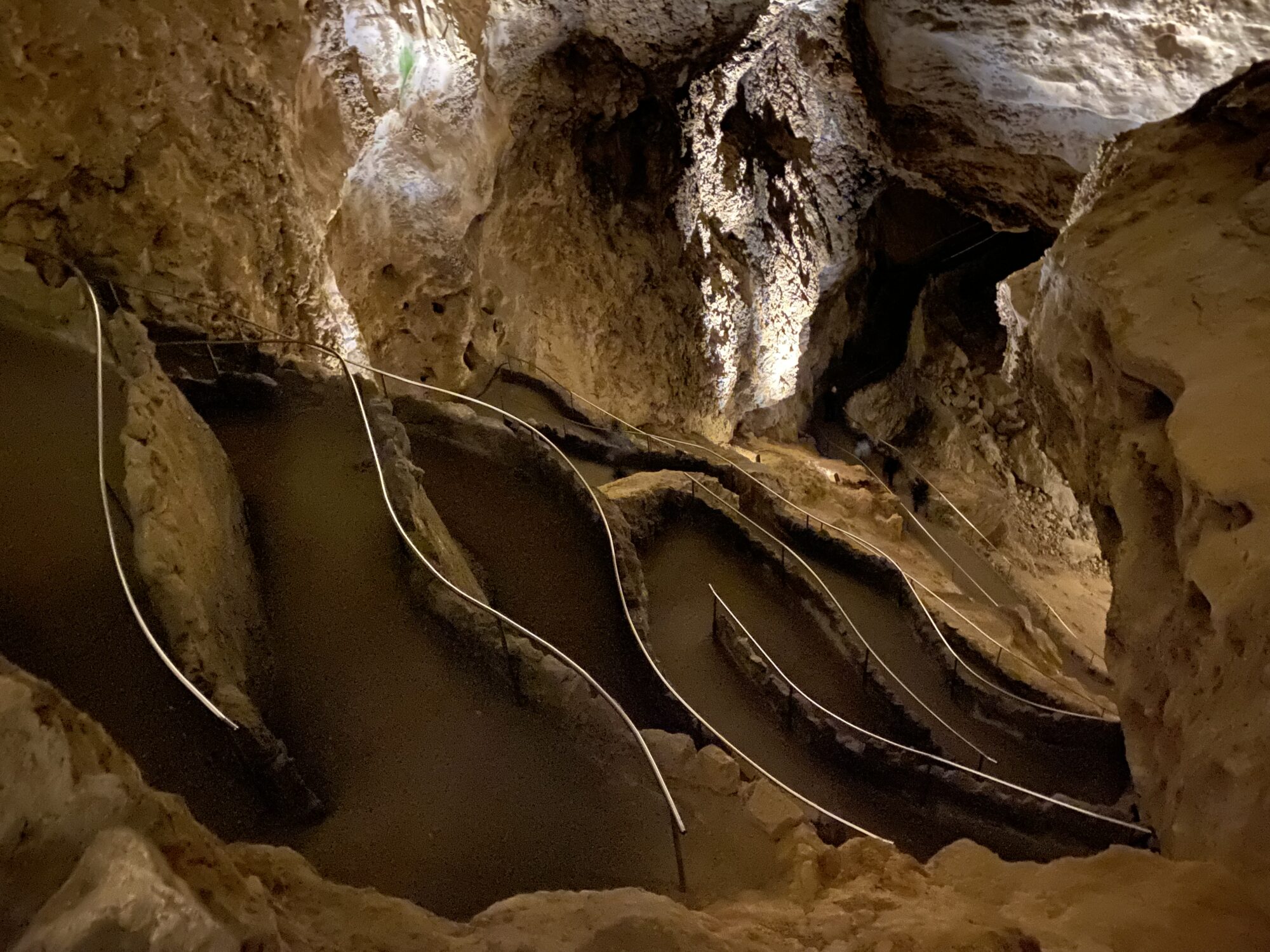WOW!!!
That’s all. What else could I say?
Okay
We hiked into the caverns. Its easier than taking the elevator down and hiking out. Those that only ride the elevator and walk through the Big Room are wasting their time.
It’s a 2 km walk into the big room on dimly lit, meticulously prepared, cemented paths with railings to hold onto while you look up, around and back to get all the sights in.
You’re about 240 metres underground in the Big Room and some very old formations must reach 20 or 30 metres and 10s of metres in circumference. Others are very fragile looking and impossible to measure from a visitor’s perspective. They’re just too far away.
The route in also has an average 20% grade over those two km of switchbacks. Then there’s another 2+ km to walk around the Big Room. It took us a little over 3 hours. The best part? Its low season, so instead of battling 5000 visitors per day in the high season, I don’t think we saw 50 people in the cavern while we were there.
We have done the caves at Hornby Lake on Vancouver Island, Elbow Falls cave in Alberta, a marble mine tour in Norway, Salt Caves in Colombia and various other mine tours in BC. They are all worth doing. Each one teaches you something new.
This was our fourth time underground in the past month. The Colossal Caves near Tucson had been badly damaged by early tourist practices, the Karchner Caves were pristine due to the efforts of the young guys who discovered the caves and worked with the geologist governor at the time, and the Bisbee copper mine and area showed how the earth has been used to garner resources.
None of them quite match the sheer magnitude of the Carlsbad Caverns. Tourists get access to less than 3% of the known passages in the system. Bummer! I’m not sure I could handle the crawling and squeezing required to get into the other areas, though.
Look at the picture galleries on the blog, but understand that the images just don’t do it justice.
Apparently, the Big Room could hold two and a half Capital Buildings. That doesn’t mean much if you’ve never been to Washington. The cavern is big, with magnificent examples of stalactites, stalagmites, columns, curtains, bacon, cave pearls and snotites (dribbling, slimy, microbe laden fluid looking like young stalactites – who chose that name??. Couldn’t help but think it was an 11 year old boy)
Many of these Speleothems were HUGE. The volume of empty space is also astounding.
Unfortunately, it is not bat season. Like so many caves, the caverns have a large population of Brazilian Split Tail Bats that come to roost in the summer months. To get out of the cave each night, they have to fly a kilometre to get to the cave opening before they head to their feeding areas.
The video in the visitor’s centre covered some research being done on the flight patterns of the bats as they exit the caves to feed. The algorithms being applied to the carefully visually recorded movements of individual bats and the coordination of the whole group of bats would be fascinating to a mathematician, confounding to the rest of us.

Wow! I was there a long time ago. I need to visit again! Thanks for the pictures and descriptions.